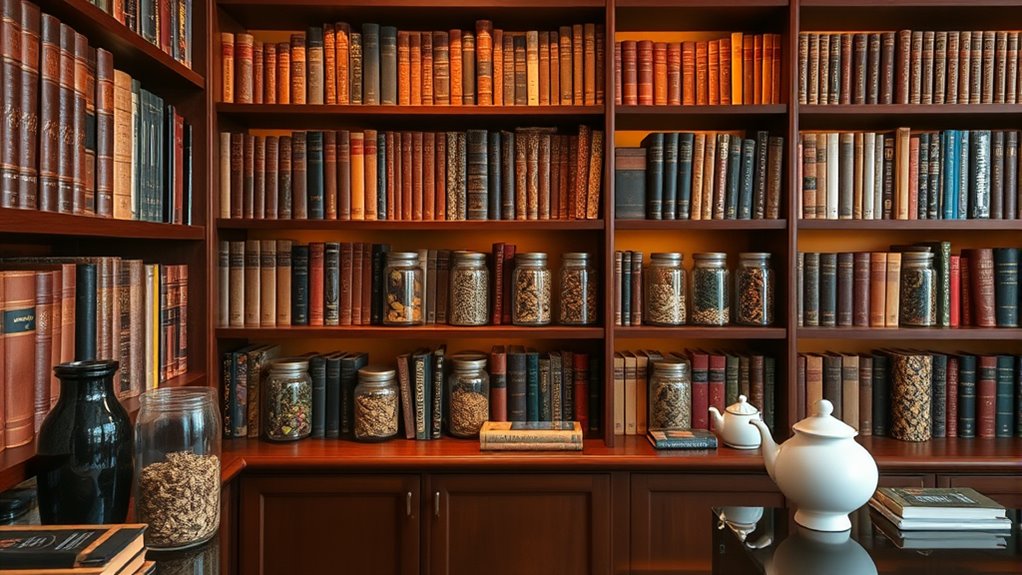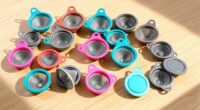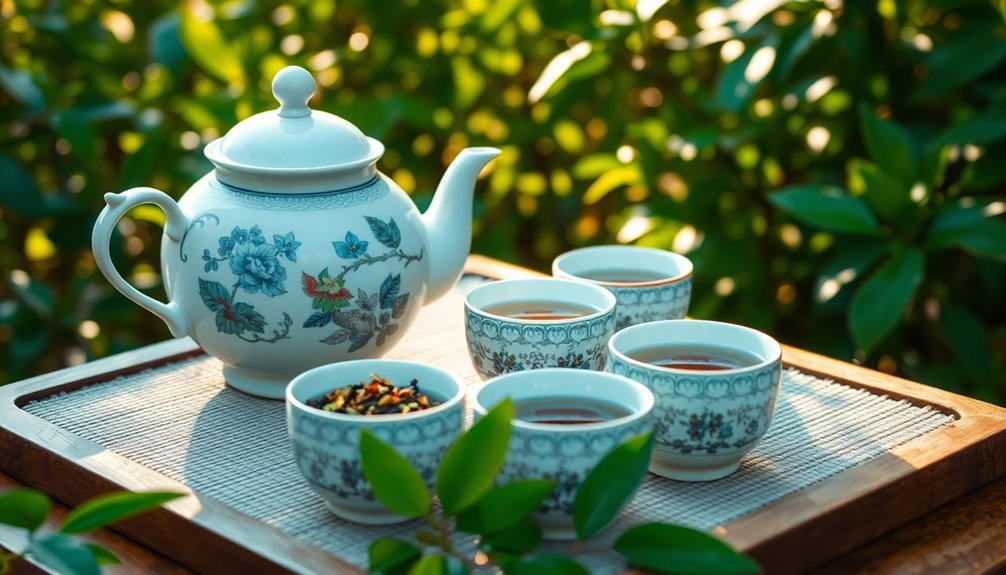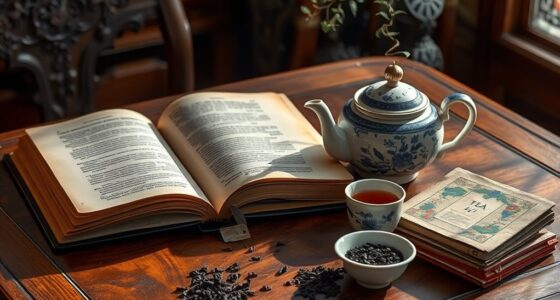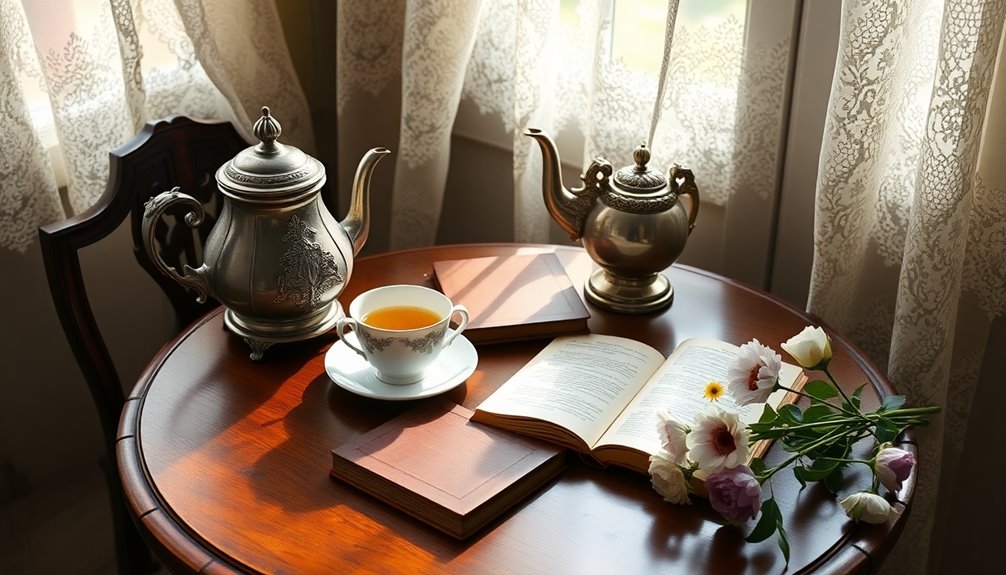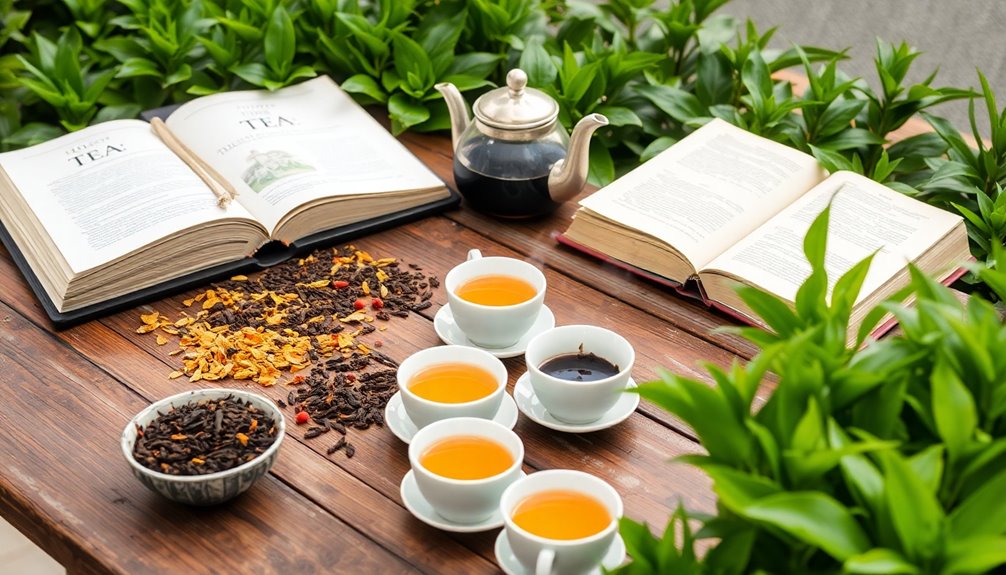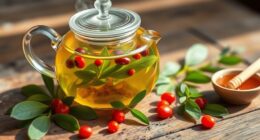To curate your tea library effectively, store samples in airtight containers made of glass or stainless steel in a cool, dark, and moisture-free space to preserve flavor. Keep your books organized nearby, using shelves or trays to separate different types and profiles of tea. Place tasting essentials close at hand, creating an inviting environment that encourages exploration. If you continue exploring, you’ll discover tips on enhancing your setup for a richer tea experience.
Key Takeaways
- Store tea samples in airtight, lightproof containers near relevant books for easy reference during tasting.
- Organize samples and books by tea type or flavor profile to create a cohesive, accessible collection.
- Label containers clearly with tea details and keep books upright on small shelves or trays for quick access.
- Place tasting essentials nearby, such as cups and utensils, to facilitate seamless learning and exploration.
- Design the space to balance storage, reading, and tasting areas, creating an inviting, educational tea library environment.
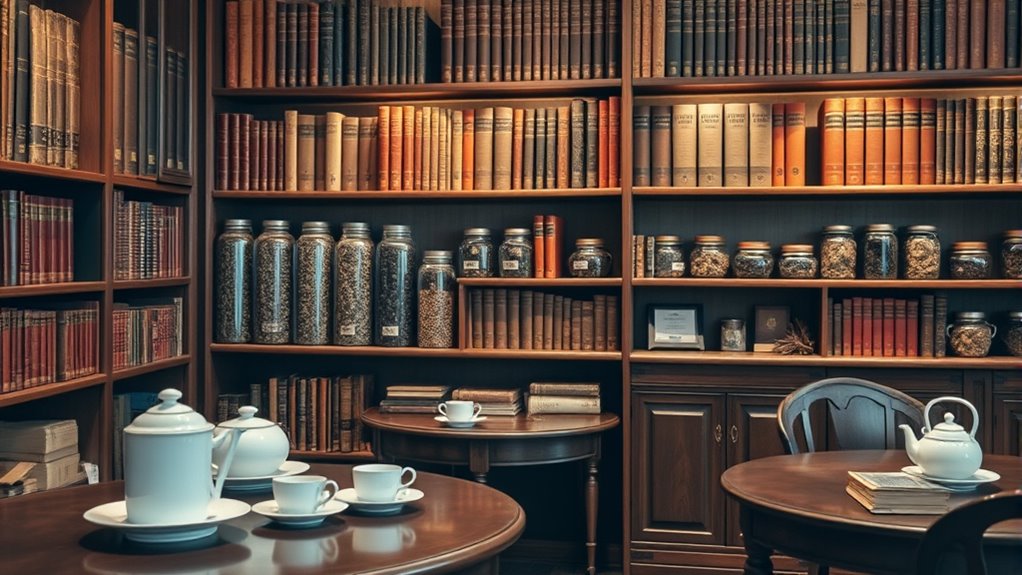
Have you ever wondered how to create a tea library that truly reflects your taste and curiosity? Building a collection that combines both books and samples requires thoughtful planning, especially when it comes to tea tasting and storage conditions. Your goal is to craft an environment where each element complements the other, making it easy to explore new flavors and deepen your appreciation for tea.
Creating a harmonious tea library balances taste, knowledge, and storage for a rich tea journey.
To start, consider your space as a dedicated sanctuary for tea. When storing tea samples, keep in mind that proper storage conditions are essential to preserve flavor and aroma. Use airtight containers made of non-reactive materials like glass or stainless steel, and store them in a cool, dark place away from direct sunlight, heat, and moisture. This prevents oxidation and flavor degradation, ensuring your tasting experiences stay true to the tea’s character. Label each container clearly with the tea type, harvest date, and any tasting notes you might have, so you can easily reference and compare flavors over time.
As you curate your tea library, think about how your collection of books can enhance your understanding of tea tasting. Choose titles that cover a range of topics—history, brewing techniques, regional profiles, and tasting notes. Arrange your books on shelves near your tea storage area so you can easily grab one when you want to learn more about a particular tea or experiment with new brewing methods. This creates a seamless experience where knowledge and samples come together, enriching your tasting journey.
When selecting teas for your library, aim for variety—green, black, white, oolong, and herbal infusions—each offering unique tasting profiles. Rotate your samples regularly to keep your palate engaged and to discover new favorites. As you learn through tea tasting, you’ll develop a better sense of which storage conditions work best for different types of tea, helping you refine your storage practices over time.
Creating a dedicated space for your tea library also means organizing your books and samples thoughtfully. Use small shelves or trays for samples, keeping them separate according to their type or flavor profile. Keep your books upright and accessible, perhaps with a small table or chair nearby for tasting sessions. This setup invites you to spend time exploring, reading, and tasting in a relaxed, inspiring environment.
In essence, curating a tea library isn’t just about collecting; it’s about creating a cohesive space where knowledge and sensory experience intersect. By paying attention to storage conditions for your samples and selecting books that deepen your understanding, you transform your collection into a personalized haven for tea discovery.
Frequently Asked Questions
How Do I Prevent Tea Samples From Damaging Library Books?
To prevent tea samples from damaging your library books, focus on proper humidity control and sample containment. Keep samples in airtight containers to avoid spills and moisture transfer. Maintain a stable humidity level in your library to prevent mold and warping. Regularly check containers for leaks, and consider using silica gel packs to absorb excess moisture. These steps safeguard your books while keeping your tea samples fresh and contained.
What Are the Best Storage Materials for Tea Samples?
Perfectly packaging your tea samples prevents pests, preserves flavors, and protects your collection. You should choose airtight containers that keep moisture and odors out, ensuring freshness. Pair these with acid-free paper to prevent staining or damage to your samples. Using durable, non-reactive materials guarantees your tea stays pristine while your books remain undamaged. This simple, savvy storage strategy safeguards your treasured collection and keeps it tasting terrific.
How Often Should I Rotate or Update My Tea Collection?
You should rotate or update your tea collection seasonally, much like pruning a plant to encourage growth. Regular inventory tracking helps you identify which teas are nearing their peak or expiration. By doing this, you guarantee freshness and variety. Consider reviewing your collection every few months, especially after seasonal changes, to replace or prioritize teas, keeping your collection vibrant and enjoyable all year round.
Can I Organize Books and Samples by Tea Type or Origin?
You can organize your books and samples by tea type or origin—it’s a smart move that hits two birds with one stone. This setup boosts your tea flavor pairing ideas and makes sampling etiquette smoother, as you’ll quickly find what you need. By keeping related items together, you deepen your tea knowledge and enjoy tastings more fully. Think of it as hitting the sweet spot for a well-loved, organized tea collection.
What Are Some Space-Saving Solutions for Small Tea Libraries?
For small tea libraries, space-saving solutions like multi-tier shelving and wall-mounted racks work wonders. You can maximize vertical space by installing wall-mounted racks to keep your tea samples and books organized without cluttering your surface area. Multi-tier shelving allows you to stack items efficiently, making the most of limited space. These options keep everything accessible and well-organized, perfect for creating an efficient and stylish tea library in a small area.
Conclusion
By thoughtfully curating your tea library, you create a sanctuary where books and samples dance in harmony, like a well-tuned symphony. Keep your collection organized and accessible, turning your space into a treasure trove of flavors and stories. When you treat your tea library with care, it becomes more than just a shelf—it transforms into a living garden of discovery, inviting you to explore each sip and page with curiosity and joy.

